Four years on and the DJI Action 2 is still my favorite action camera
It's 2025, but for me, still nothing beats the DJI Action 2
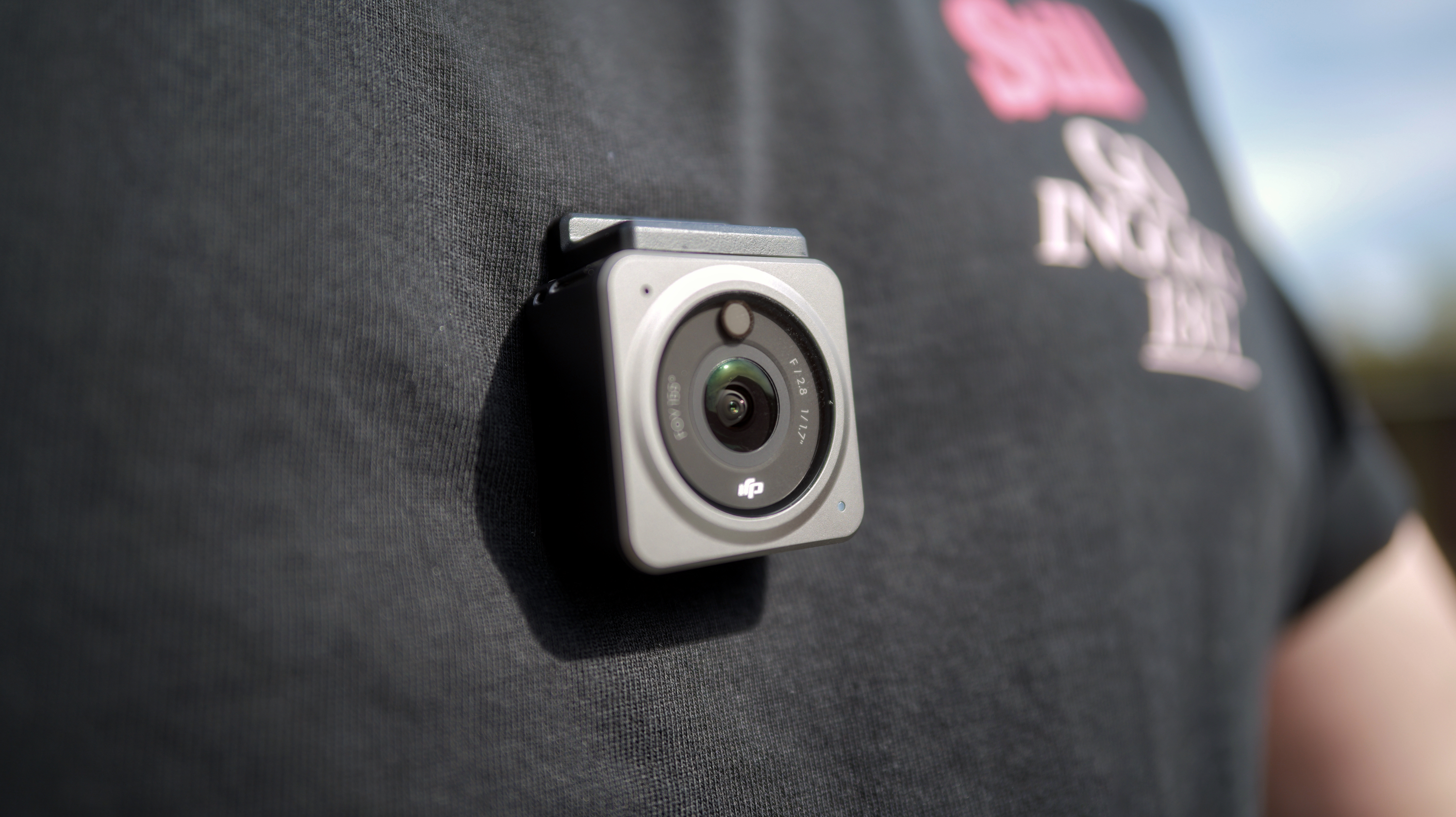
There are plenty of great action cameras released every year. We've seen seriously innovative designs from Insta360, DJI continues to push the boundaries of low-light performance, and GoPro pushes the boat out with image quality. However, even with all that going on, the camera that stays planted in my kit bag is the DJI Action 2, released back in 2021.
I recently pulled the Action 2 out on a press trip, and since I was surrounded by tech enthusiasts, I expected questions like "why are you still using that thing?", but that's not what happened. Instead, I got comments like "what is that? It looks so cool", and "wow, I forgot how small the Action 2 was."
I think the DJI Action 2 was ahead of its time, and for my needs, it's still one of the best options. Of course, it's not perfect, and there are a few things I'm desperate to see addressed, but it's still my favourite. Here's why I'm still using it in 2025, and why I think DJI needs to make a new one.
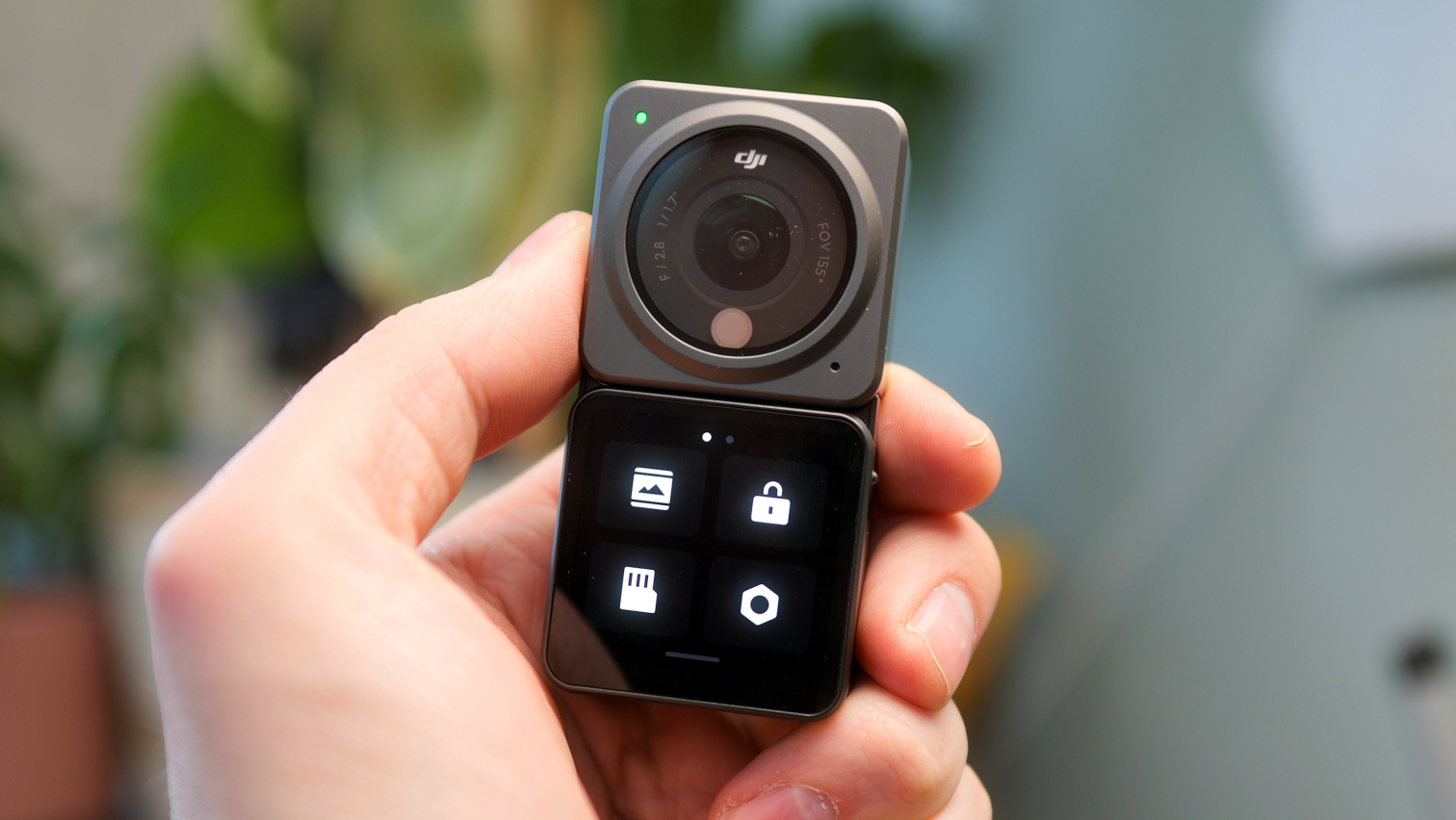
Why I'm still in love with the DJI Action 2
For starters, let's talk about the design. If Apple designed an action camera, I think it might look something like the DJI Action 2. It's slick and minimal with a metal shell, the polar opposite of your typical rubberised and rugged GoPro.
Despite that, it's just as hardy. Trust me, I've strapped this thing to an FPV drone and bounced it off the concrete plenty of times. It's not indestructible, of course, and the glass will be the first thing to crack, but you could say the same thing about GoPros. In the majority of action sports scenarios, you're very unlikely to break it.
Then, there's the modular design. This one is a little more controversial, but it fits my needs well. The main camera is tiny, measuring about 4cm x 4cm and weighing just 56 grams. For the sake of comparison, the DJI Action 5 Pro weighs 146 grams, while the Hero 13 Black weighs 159 grams, and they're both much, much larger.
When used standalone, you'll barely feel it strapped to your helmet, and it's even better if you use it with a drone, as you can fly faster and for longer without such a meaty payload on top. The physical size also means you can tuck it in places where even a GoPro would be too large.
Get the Digital Camera World Newsletter
The best camera deals, reviews, product advice, and unmissable photography news, direct to your inbox!
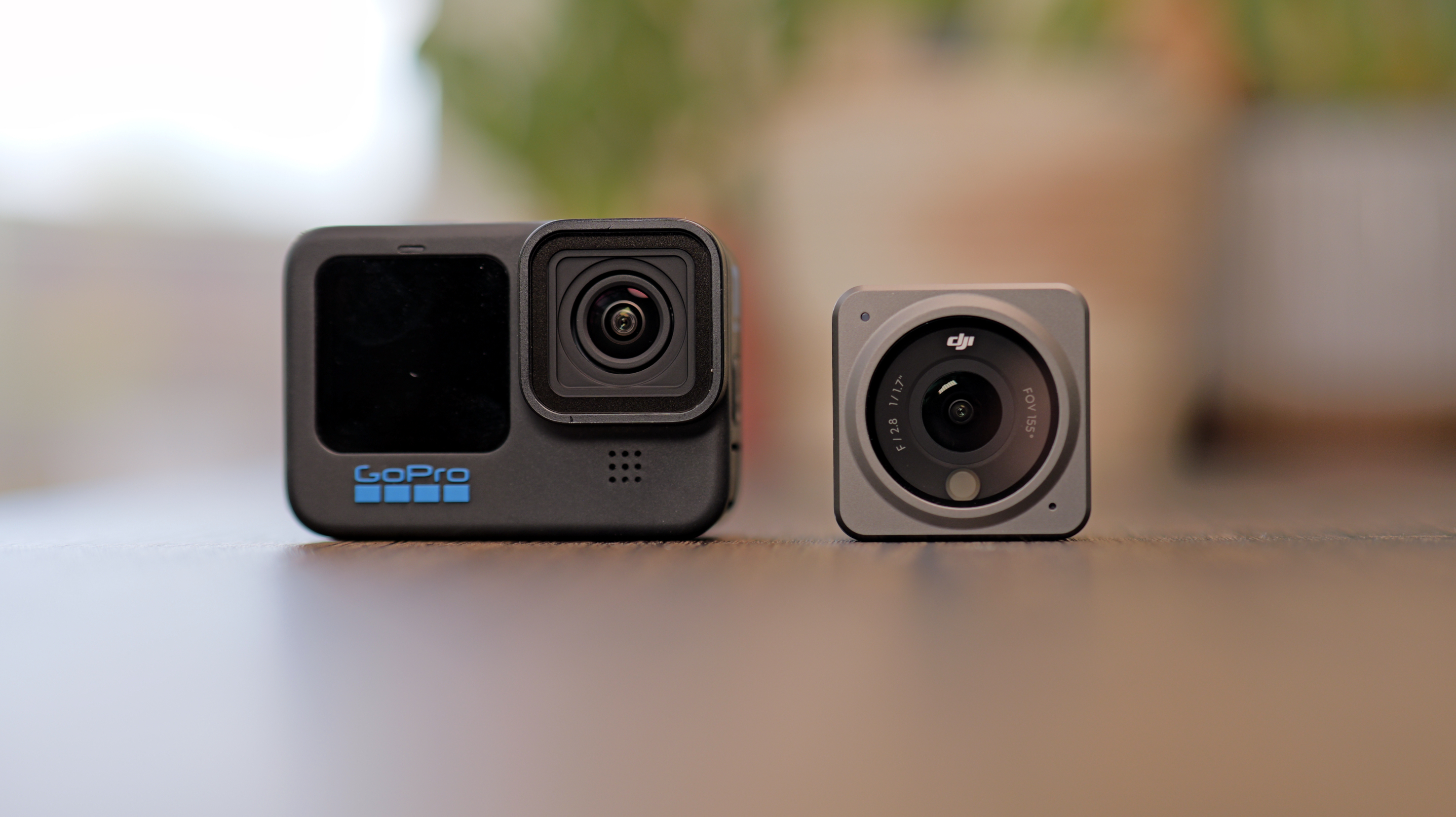
I like to use the Action 2 for POV behind-the-scenes shots, and the included magnetic lanyard is perfect for this. It's so much more subtle than a GoPro with a chest harness, and yet it yields very similar results.
When you need to see yourself, or if you need it to run for longer, you just magnetically snap on an external module. There are two varieties, one that adds a front-facing touchscreen for vlogging and one without the screen, mainly used as a clip-on battery extender. Both add crucial connectivity, like a USB-C port and microSD card slot.
The camera unit has built-in storage, and you can offload your clips to the SD card while the module is attached. My version has 64GB built in, and for the way I use an action camera, that's more than enough. If I have a lot of shooting planned, I just dump the files to the SD card while I'm taking a break. Be careful which one you buy, though, as the 32GB model is much more limiting.
When it comes to image quality, it might not be the absolute best, but for me, it's close enough, especially in the daylight. It's miles better than compact rivals like the Insta360 Go 3s, and only marginally behind the likes of the Action 5 Pro and Hero 13 Black.
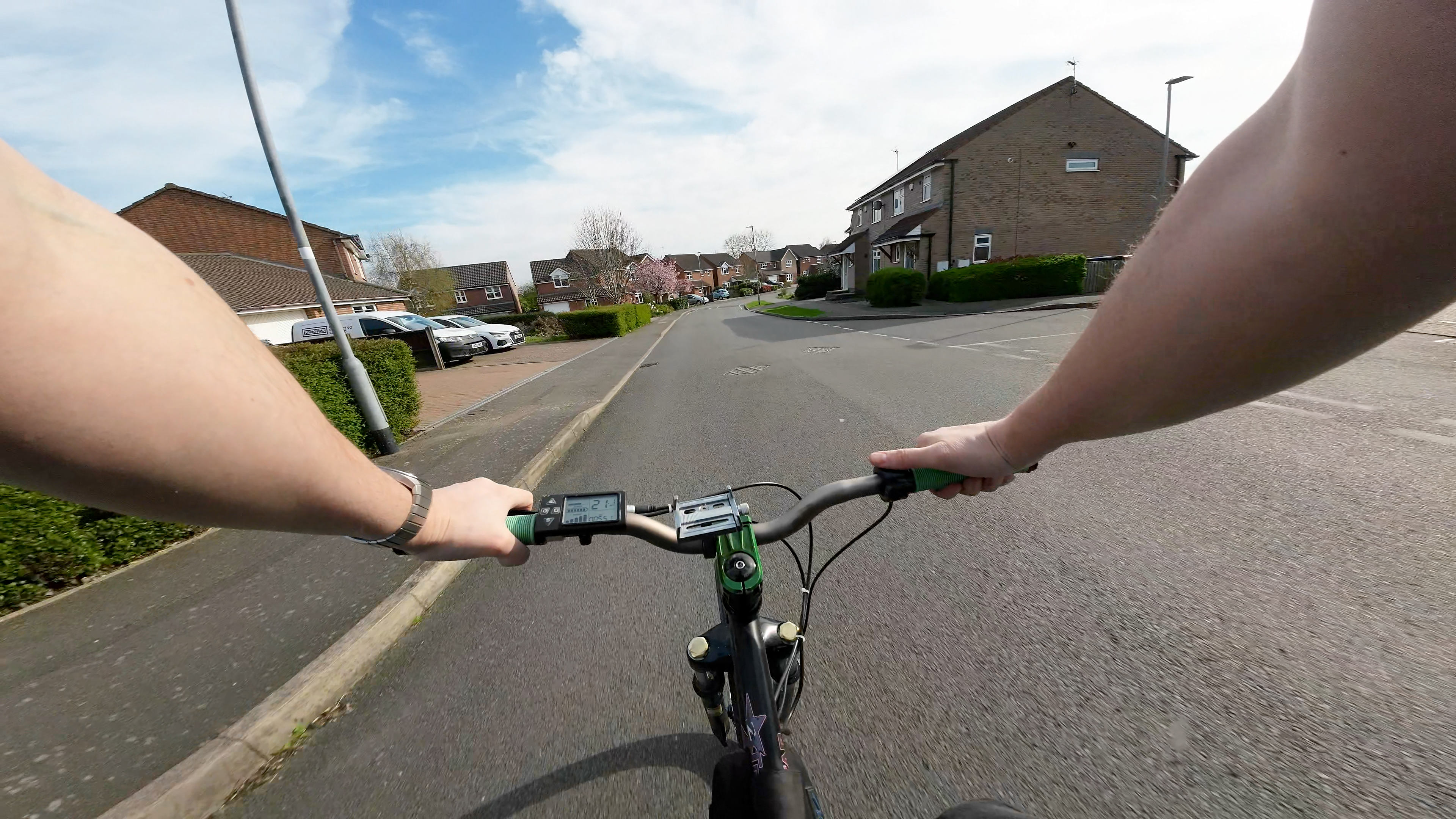
You can still record in 4K 16:9 at up to 120fps, or 4K 4:3 at up to 60fps, and while there's no LOG profile, you still get D-Cinelike for a bit more flexibility with colour grading. Considering the size and weight, these specs are pretty darn impressive.
My favourite thing, though, is the insanely wide FOV. In "Ultra Wide" mode, it's noticeably wider than "HyperView" on recent GoPro cameras, and far less distorted, too. The only way to beat it with a GoPro is to use the Max Lens Mod, which is an additional purchase, and crucially, makes the camera even larger and heavier.
The ability to get this FOV from something so minuscule makes it perfect for chest-mounted cycling shots. It's so light that you might forget you're wearing it, while the extreme width of the footage makes your jaunt through the park look much more epic than it actually was.
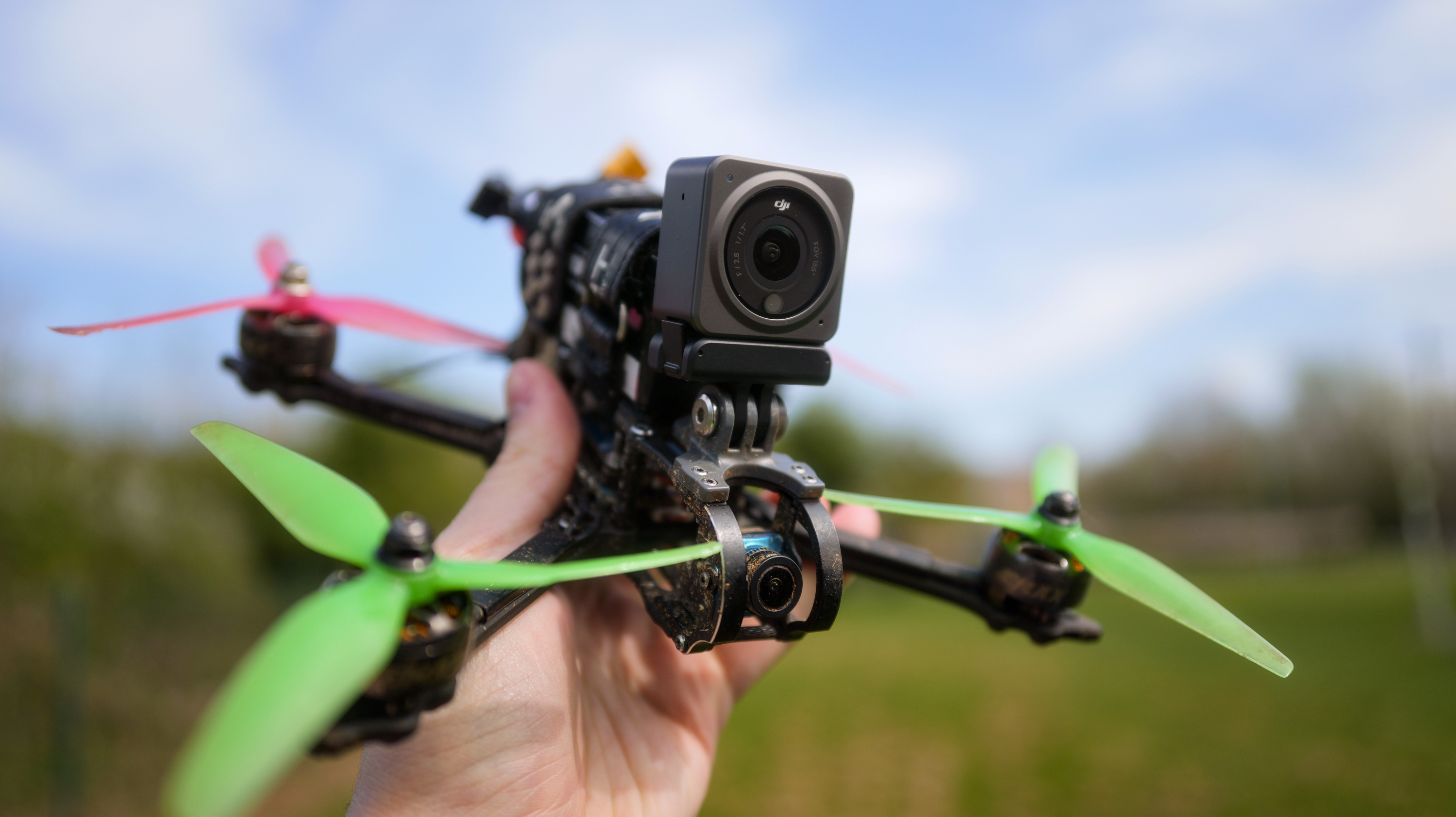
What I want to see from a DJI Action 2 successor
After all that praise, it's important to acknowledge the camera's shortcomings, as some of them are quite significant. Obviously, I've decided I can live with them, but depending on how you use your camera, they could be dealbreakers.
The first is overheating. This camera gets hot, and if you want to record static talking head shots indoors, it simply isn't the tool for the job. That's not how I use action cameras, and for me, it hasn't caused me too much trouble.
I typically use action cameras for action, and when there's a breeze blowing across the camera body, it rarely gets too hot. Living in the UK certainly helps, but I recently used the camera in Singapore, and while I myself was overheating, the camera was able to keep running so long as I was on the move.
Regardless, better thermal performance would certainly up this camera's appeal. With a newer, more efficient chip inside, I can imagine a successor that fares better in this department.
Next is the low-light performance. This 1/1.7-inch sensor just can't keep up with the 1/1.3-inch unit used on DJI's newer cameras. Is there room for a larger sensor in this tiny shell? I have no idea, but a boy can dream.
Then there's the fact that the DJI Action 2 can't directly connect with DJI wireless mics, something that works on the new action cameras, as well as the Osmo Pocket 3. I've still been using the DJI Mic 2 with the Action 2, but I have to connect the receiver to the USB-C port, and it makes for a much bulkier package.
While we're at it, I'll add 10-bit colour and a LOG profile to the wishlist, for obvious reasons.
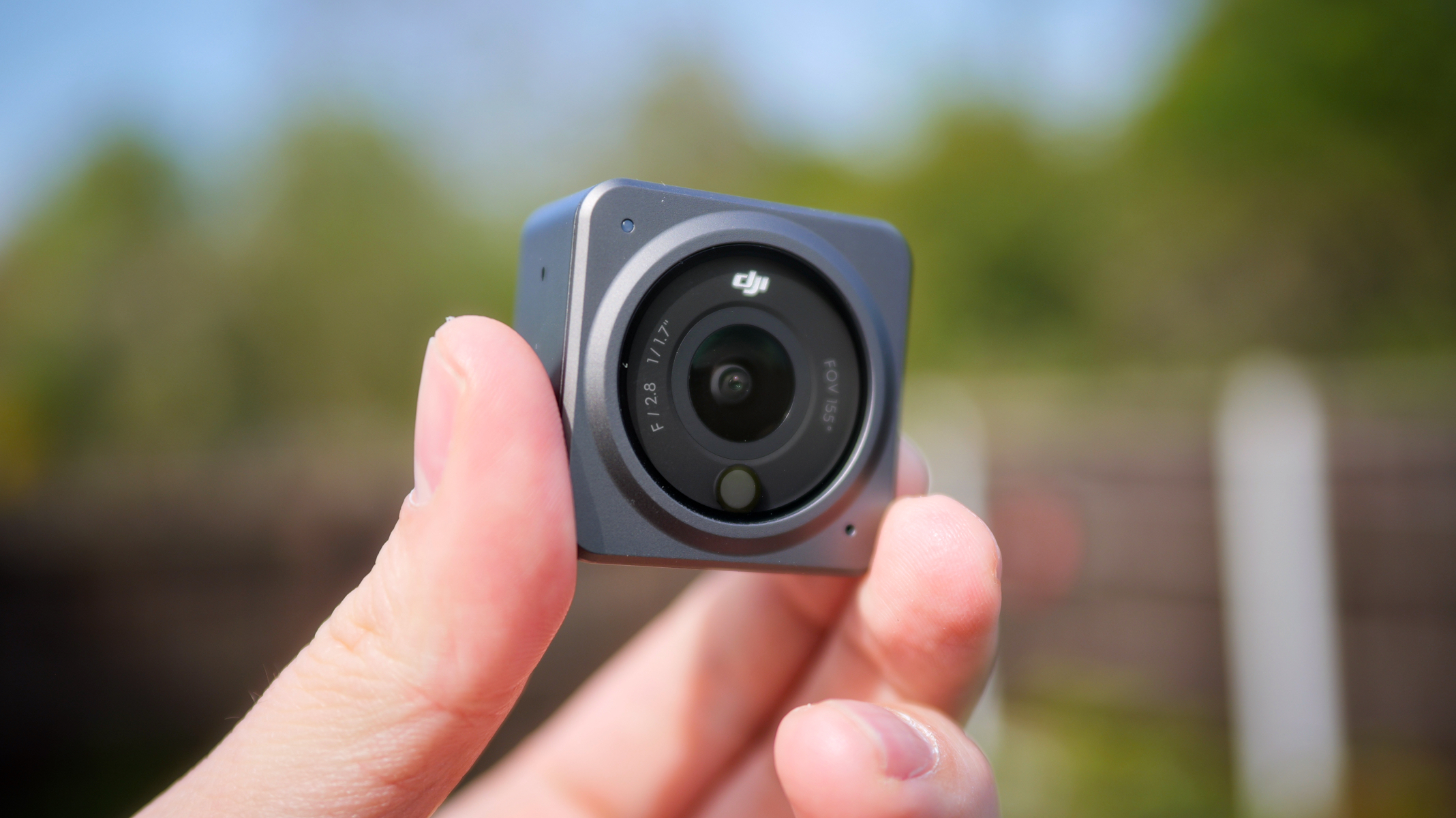
Will there ever be another one?
Since the launch of the Action 2, DJI has exclusively released action cameras with a GoPro-style form factor, and there's not much to suggest it'll change anytime soon. Rumours say we might see a 360-camera sometime soon, but as for a mini-modular camera, there are no whisperings.
Interestingly, though, the camera hasn't been officially discontinued, and you can still buy it brand new from DJI's UK site and Amazon. This gives a glimmer of hope, as it means DJI still sees the value of this camera, and presumably, it's not just me who feels the same way.
For now, I'll happily keep using my Action 2. And unless something arrives that's smaller, with better image quality, I don't see that changing anytime soon.
You might also like...
- For more of the latest action cameras you can buy – check out our guide to the best action cameras.
- You can also see what else is out there except GoPro, with our guide to the best GoPro alternatives.

Luke is a freelance tech journalist who has been working in consumer electronics for over a decade. His specialties include cameras, drones, computing, VR, and smartphones. Previously Features Editor at Pocket-lint, Luke can now be found contributing reviews and features to a variety of tech publications, as well as running a YouTube channel called Neon Airship in his spare time.
You must confirm your public display name before commenting
Please logout and then login again, you will then be prompted to enter your display name.
